Simple to make and packed with flavour. Turks serve them at just about any occasion. And few leftovers are more treasured than finding mercimek köftesi in the fridge when a midnight snack is called for. What’s not to like about Turkish lentil meatballs?
To many, Turkish cuisine is one of döner kebab, köfte and perhaps pide. But it’s so much more than that.
The regional cuisines are as diverse as those of different countries. And then there’s the food which is perhaps most elusive to the outsider. Some of the most beloved dishes rarely appear on restaurant menus. These gems are only made at home.
This is in large part what led me to write my second book, Aubergine & tahini. It explores the home cooking of the region. The less famous – but equally tasty and much simpler to make – dishes. For the moment, it’s only published in Norway, where it’s enjoyed great success, hitting third print within its first year.
If I were to reduce the home cooking gems down to a single flag carrying dish, I’d choose mercimek köftesi. Deliciously aromatic vegetarian meatballs. Made from red lentils, bulgur and a few carefully selected ingredients, these flavour bombs are as comforting as they are tasty.
And they’re as absent from restaurant menus as they are present at people’s home.
Vegan dish that’s perfect for any occasion
At least, that’s my experience. I feel like whenever I enter someone’s home, it’s never long before a plate of these bright orange lentil meatballs appear.
I’ve had them for breakfast. I’ve had them as an appetiser before dinner. I’ve had them as one of many mezes at an occasion. I’ve had them as a snack from the fridge late at night.
One of the genius things about mercimek köftesi, is that they’re served at room temperature, or even cold. What’s more, they keep perfectly for days.
Make-aheaders, you’re welcome.
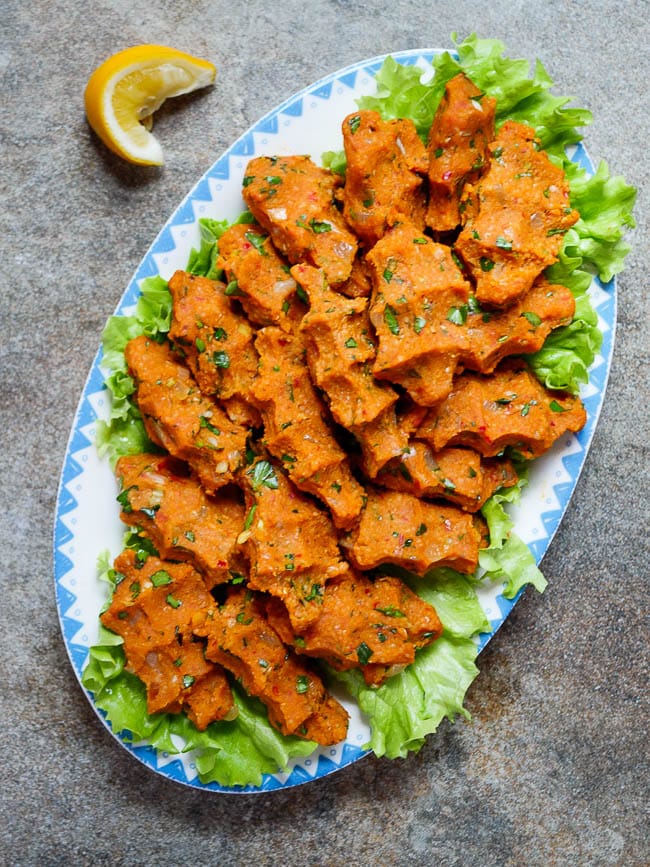
Though they’re not just for those who make ahead. I find having a plate of these in the fridge is the perfect answer when you’re feeling peckish before bed, or between meals. Fulfilling enough to keep you going until the next meal, but not so much as to spoil the hunger for too long.
They also happen to be vegan, if that’s important to you.
The trick to perfect mercimek köftesi
Making Turkish lentil meatballs is deceptively simple, but it does require a thing or two from your kitchen cupboards.
Red lentils make up most of the base, along with bulgur. Here, you want to use the fine bulgur. If the brand is Turkish (or German-Turkish, as most Turkish sounding brands outside of Turkey are), it will be sold as köftelik bulgur. Bulgur for meatballs.
The bulgur will cook in the residual heat and liquid of the lentils, so it’s essential to use the fine grained variety. I suppose you could substitute fine couscous if you must. Bulgur is, however, easily accessible in most places.
Turkish lentil meatballs get their bright colour, and much of the flavour, from tomato and red pepper pastes. It is worth seeking out good quality versions if you can. In Turkey, I get mine sundried and home made from Turunç Gıda, a family business I know and trust. They don’t ship abroad, but if you’re in Turkey I highly recommend them.
Onions are another essential ingredient. They are crucial to getting the right flavour here, but if you’re not careful, they can be overpowering. Striking the right balance is key. To that end, I add onions three ways – sautéed brown onions, plus raw red onion and spring onion. You can use just either if the latter two, but make sure there’s a good balance of flavours.
Finally, keep them away from the frying pan. This may sound odd to re-iterate if you’re already familiar with the dish, but beyond boiling red lentils and sautéing onion, there’s no heat involved in making this dish.
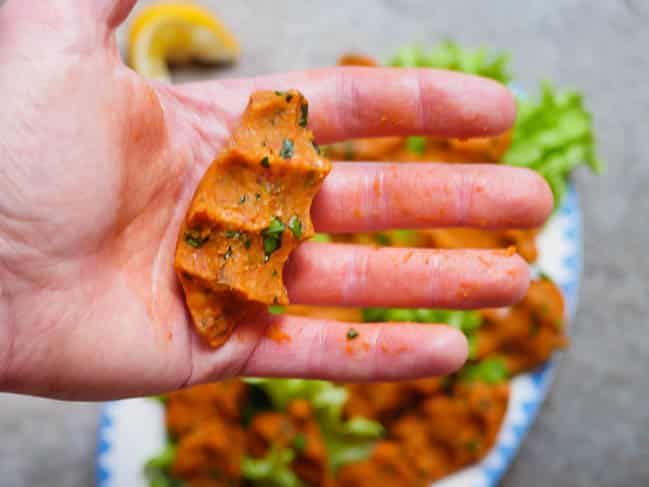
Once your mixture is ready, all you need to do is shape them. Then you’re done!
You can shape them however you like. I like squeezing them between the fingers in my hand for a wavy, elongated shape. Moisten your fingers with a little water or oil every now and again to keep them from sticking to your hands.
How to serve Turkish lentil meatballs
Traditionally, mercimek köftesi is served and eaten with fresh salad leaves. Delicious!
That said, I often skip the salad leaves. They are also delicious as they are!
As I mentioned above, these lentil meatballs can be served with any meal, though personally I usually serve it as a meze or appetiser before dinner. It’s also perfect for those days when you’re putting a number of dishes, small and big, in the middle of the table to let everyone help themselves.
In summer, why not consider it for your picnic or outing in the park? Turkish lentil meatballs keep well for hours at most temperatures. Of course, if you’re moving around, they may not be as pretty as when you shaped them. But they will still taste amazing!
While I rarely make them to snack on between meals, I always make sure there’s plenty left over for that purpose! Good then, that they keep for days in the fridge – probably more than a week if you pack them well. Though I assure you, they’ll be long gone by that time.
The recipe makes 25-30 lentil meatballs. Depending on what is served alongside, 2-3 lentil meatballs per person is usually enough. If this is a major part of the meal, however, allow at least twice that.
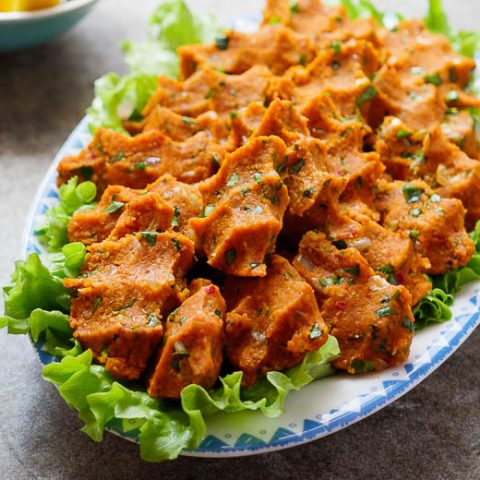
Turkish lentil meatballs
Ingredients
- 175 g red lentils (dry)
- 400 ml water
- 80 g fine bulgur
- 3 Tbsp olive oil, I use a mild extra virgin
- 1 large onion, finely chopped
- 50 g tomato paste
- 25 g Turkish hot pepper paste (acı biber salçası)
- 1 ½ tsp ground cumin
- ½ small red onion, very finely chopped
- 3 medium spring onions (green onions/scallions), very finely chopped
- 25 g flat-leaf parsley, leaves only, finely chopped
- salt and pepper
To serve
- 1 lemon, cut into wedges
- crispy green salad leaves, e.g. romaine lettuce
How I make it
- Add the lentils and water to a pot. Bring to a boil. Put a lid on it, turn the heat down to low/medium and leave to simmer until the lentils are completely falling apart, 20-25 minutes. Take off the heat, add the bulgur and mix well. Put the lid back on and leave to cool.
- Meanwhile, heat a sauté pan over medium heat. Fry the onion in the olive oil until soft, but not coloured, 8-10 minutes. Stir regularly to ensure it doesn’t catch. Add the tomato paste, red pepper paste and cumin. Fry for a couple of minutes, stirring constantly. Leave to cool.
- Once everything has cooled, mix all the ingredients (save the lemon and salad leaves) well and season to taste with salt and pepper. Using your hands is easiest. The mixture should be very smooth. If it’s looking a little dry, adjust with some more extra virgin olive oil.
- Shape the mixture into lentil meatballs. I like to press my fingers against the palm of the same hand to get a nice, wavy pattern – but any shape will do. Dip your hand in a little water or oil every now and again to avoid it sticking to your skin.
- Serve with lemon wedges and crispy green salad leaves.


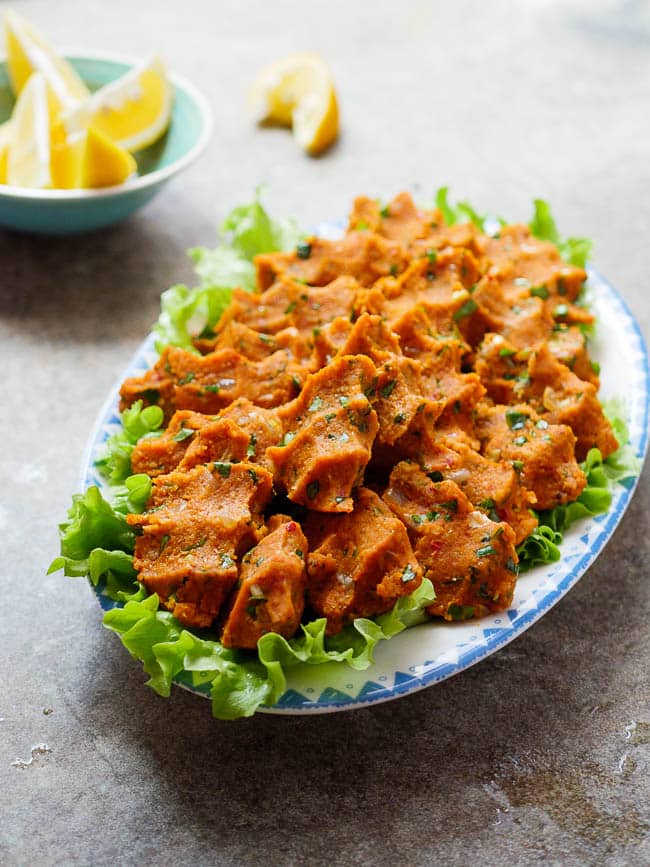


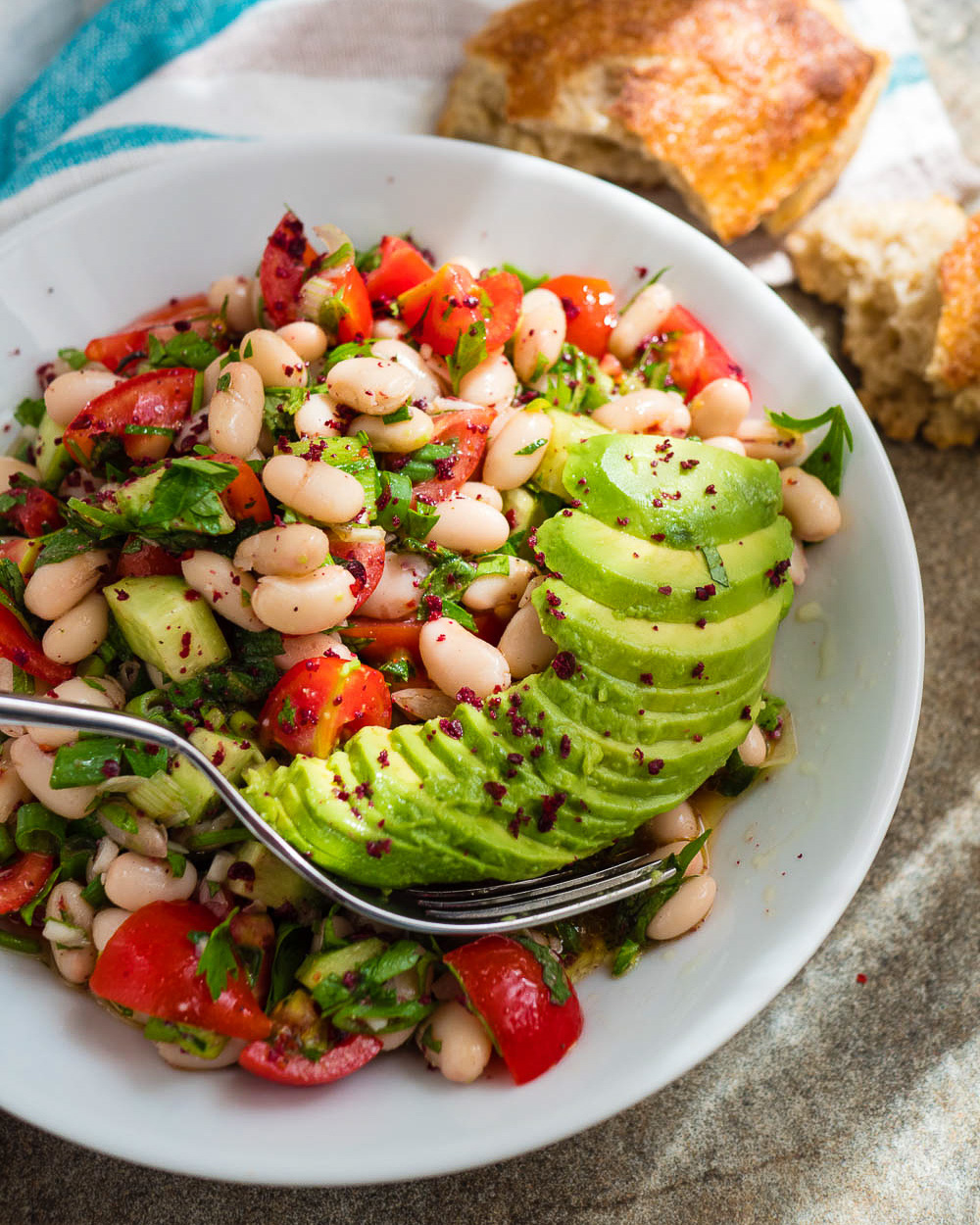
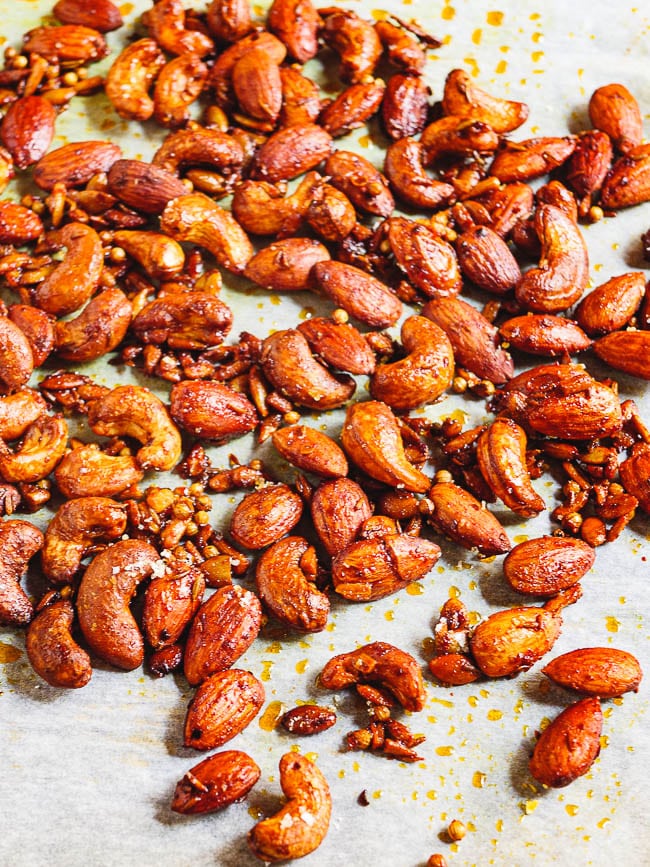
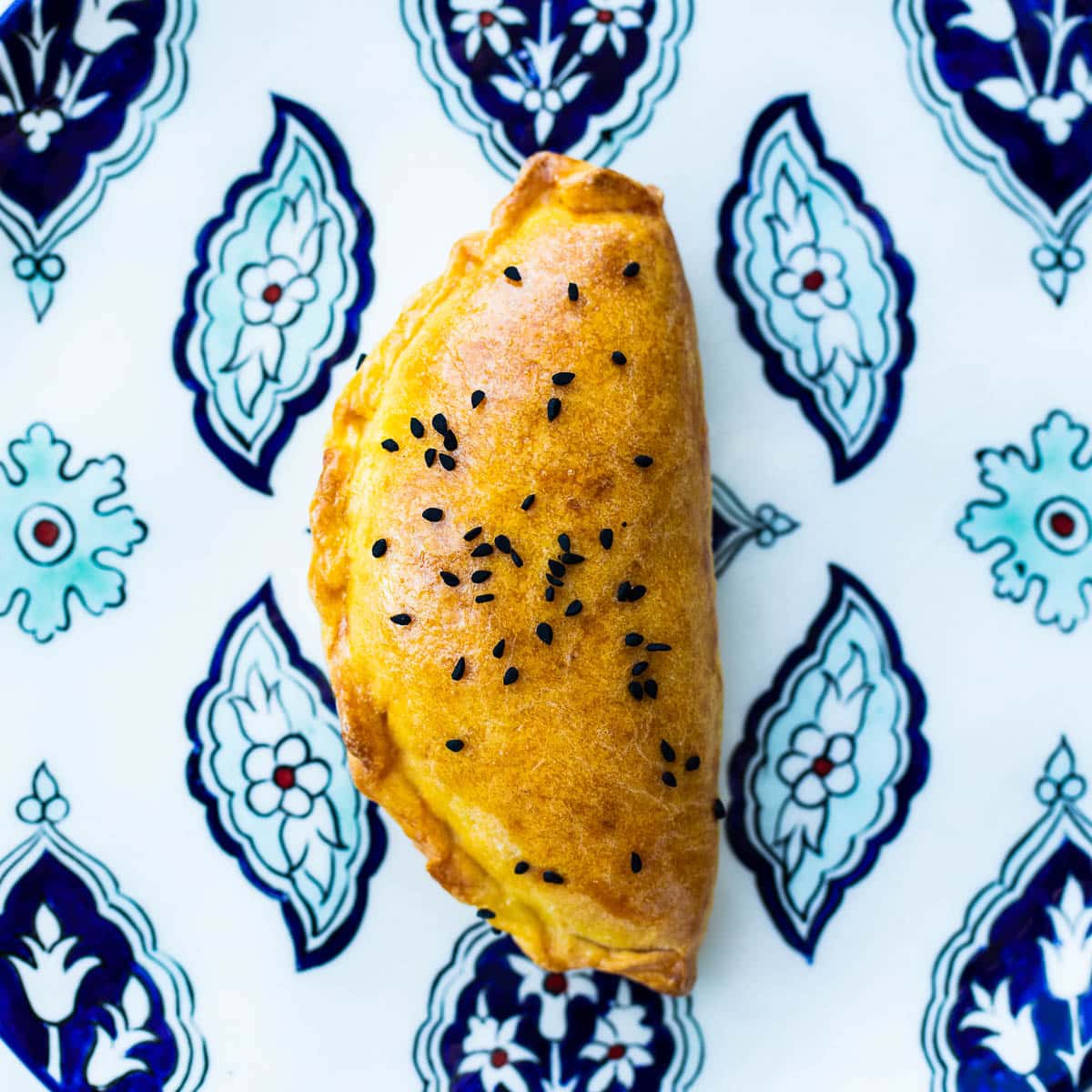
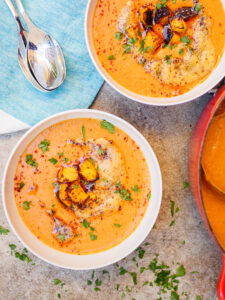
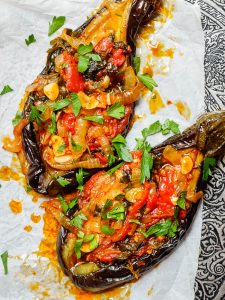
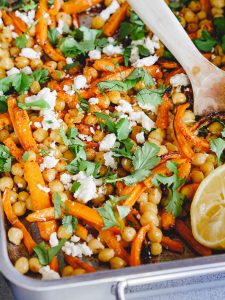




12 responses
Delicious, definitely a recipe for keeps! The pomegranate syrup went really well with them, even the meat eaters scoffed them! The next day I used the leftovers (mixed with chopped toasted walnuts) as a stuffing for courgette ‘shells’ (baked sitting in a broth made of veg broth, lemon juice , garlic, chili) – yum 😋
Delicious recipe! I had never made these before, but I have made something similar. I rubbed olive oil on the outside of some and tried air frying them to see if they’d crisp up. They did, but not so much. I liked them both cold and hot, by themselves and in a sandwich! I’ll be making more of them 🙂 ty
I lived in Turkey for a few years and this is exactly how it was prepared! Thanks, it’s a favorite of mine! We always ate it with a spicy salata. I’m just curious because I’ve been searching for this for a while but my other favorite dish my Turkish friends would make was a fish sort of casserole with cheese and maybe rice or bulgur, I’m not sure because it’s been many years and most of our communication was in Turkish so I don’t even know what kind of fish it was although I suspect it was fresh sardines…does this ring a bell? I would live to know what this dish is called so I can find a recipe!
Thanks for your kind comment! Not sure about your fish dish, though many fish restaurants sell a similar seafood stew (balık güveç) which is essentially pieces of fish and seafood braised in vegetables and sometimes topped with cheese. Afraid I don’t have a recipe for it at the moment but perhaps this could help you a little as you search elsewhere. Good luck!
this is done with red lentils & fine cracked wheat. Don’t try something else such as Polenta, corn meal or quinoa. That is something else, and it won’t taste the same. That does not mean that you can not do it but it is not the same dish.
This is one of my favourite foods, I often order for take-away and eat at home. It’s called Çiğköfte everywhere. I often wondered what was in it. I am an anxious to try this recipe to see how close I can come to authentic. I’m not doubting the recipe — I don’t have 100% faith in my own cooking skills.
Çiğ köfte looks similar to mercimek köftesi, but is in fact a different dish. It’s originally made from raw meat and lots of spicy chili paste, though these days most versions are vegetarian using bulgur instead of meat. Mercimek köftesi is made from lentils as well as bulgur, is milder in flavour than çiğ köfte – and much easier to make.
This recipe is spot on. Gram weights made it very easy to get the ratios of flavor correct. Great work!
Enjoy your recipes but don’t see u on Instagram nowadays.
Will try these beauties tonight with some drinks.
Hi any suggestions to replace the bulgur for a gluten free recipe ? what about cornmeal ?
thanks
Hi, this is a wheat based recipe. You could certainly try cornmeal or fine polenta, though I wouldn’t be able to say how it would affect the flavour or texture here. One can only try. Good luck!
I have replaced the bulgar with quinoa(cooked).
Not quit as frim as with the bulgar but works well
Abino